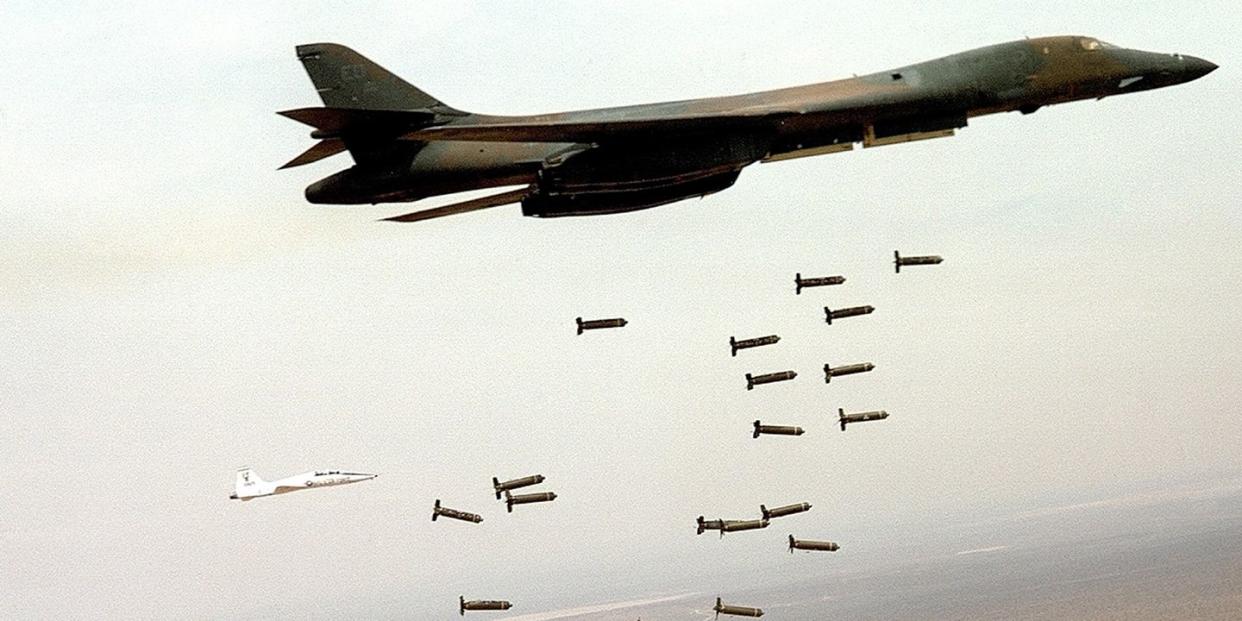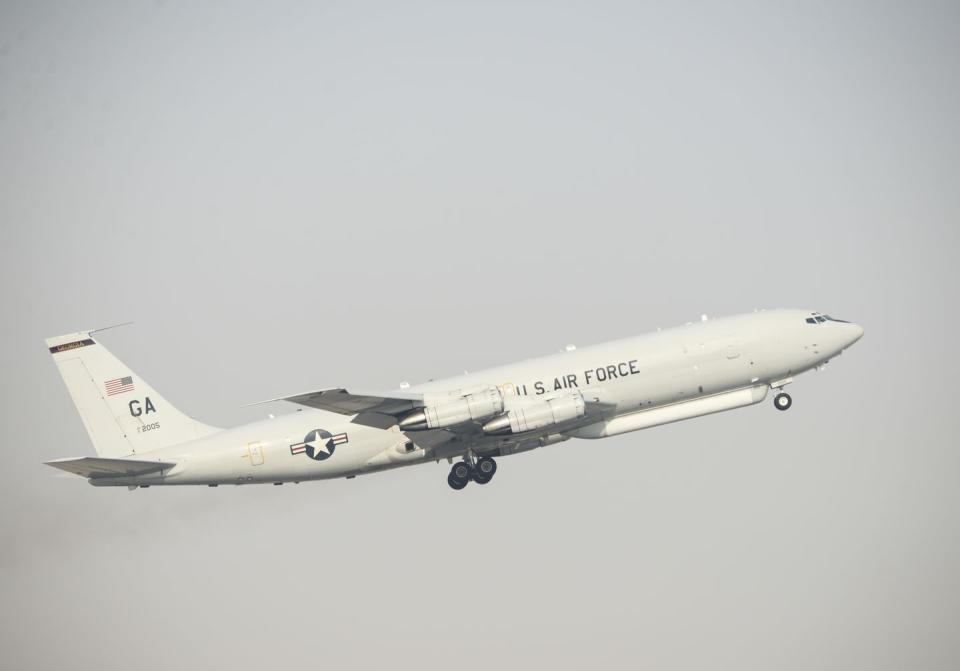The Pentagon Is Bringing Back the Cold War “Assault Breaker” Concept to Thwart China and Russia

The Defense Advanced Research Projects Agency is researching new long-range smart weapons designed to devastate attacking enemy forces, buying time for the U.S. to send reinforcements in a hypothetical future engagement.
The program, known as “Assault Breaker II,” mirrors a Cold War era program designed to stop Soviet armored spearheads poised to roll into Western Europe. The effort would consist of a combination of long-range sensors and bombers loaded with smart weapons designed to seek out and destroy tanks, ships, and other enemy systems.
Back in the 1970s, NATO faced a numerically superior Soviet Army in Europe. In the event of war, Soviet forces would have streamed into Western Europe with waves upon waves of tank and mechanized divisions. The use of tactical nuclear weapons to strike back in such a scenario, while a centerpiece of NATO’s defense strategy since the 1950s, risked escalation to all-out nuclear warfare.

In response, the U.S. embarked upon a project known as Assault Breaker. Assault Breaker would combine sensors (particularly the E-8C JSTARS airborne surveillance aircraft) with long range smart weapons designed to hunt and destroy enemy armor. While NATO ground forces went head-to-head with the first echelon of invading Soviet forces, Assault Breaker would target follow-on Soviet forces behind enemy lines, bleeding them before they even reached the front.
Now, according to Aviation Week & Space Technology, the idea behind Assault Breaker is back. The U.S. is concerned that countries like Russia and China could stage a massive surprise attack on nearby U.S. bases, destroying them and leaving the Pentagon without a means to fight back. Assault Breaker II would be a quick reaction system capable of being launched a few hours after the onset of hostilities. Assault Breaker II would heavily damage enemy forces at the front line, buying time for the U.S. to flow fresh reinforcements into the theater.
Assault Breaker II would work something like this: Say Russia has launched a attack on NATO’s eastern flank, against the Baltic states of Lithuania, Latvia, and Estonia. Russian long-range bombers and missiles have struck U.S. Army posts and air bases throughout the region, causing heavy casualties and preventing an immediate response.
In response, the U.S. Air Force immediately launches a squadron of 12 B-52H heavy bombers. JSTARS aircraft, having identified columns of Russian armor on the move across the Baltics, vector the B-52s in to intercept. Each bomber releases 20 Assault Breaker standoff missiles. As the missile nears the Russian tank column, it releases a swarm of up to 40 smart submunitions, each of which powers on its infrared sensors and begins hunting tanks. Once a tank is located, it fires an explosively forged penetrator into the thin armor protecting the top of a tank or armored vehicle, destroying it. The BLU-108 submunition dispenser, shown in the video below, can pack up to 4 tank-hunting submunitions, and a single CBU97 bomb can pack up to ten BLU-108s inside.
Assuming each munition has a 50 percent chance of destroying a tank, a single Assault Breaker weapon could knock 20 out of the 30 tanks in a Russian tank battalion out of action, rendering the unit unfit for combat. Multiply that by 240 and just twelve bombers could deal a crippling blow to an invasion force, smothering it with nearly ten thousand shots.
A similar situation could play out against China, though it is unlikely the U.S. will face significant numbers of Chinese ground forces in the Asia-Pacific. In a scenario involving China, Assault Breaker II would be used to target enemy air bases, naval bases, and even ships. The munitions could target aircraft sitting on tarmacs or the specific radar antennas on naval destroyers, blinding enemy ships and putting them out of action.
Assault Breaker II is meant to be a deterrent, dissuading potential adversaries from launching surprise attacks on the U.S. and its neighbors. Even if such an attack were successful, Assault Breaker II would prevent enemy forces from exploiting the attack, destroying them and in turn holding the enemy at risk from U.S. reinforcements. It would be primarily a defensive weapon.
The U.S. Armed Forces could field Assault Breaker II within ten years or less, the Pentagon thinks. Almost all of the technology is mature and has been in service for years. This time around even more new features could be added, such as a deconfliction mechanism designed to prevent multiple munitions from attacking the same target, the ability for the same missile to be used against targets on the ground and at sea, and self-destruct mechanisms to prevent unexploded munitions from posing a risk to civilians.
Read more at Aviation Week & Space Technology
('You Might Also Like',)

